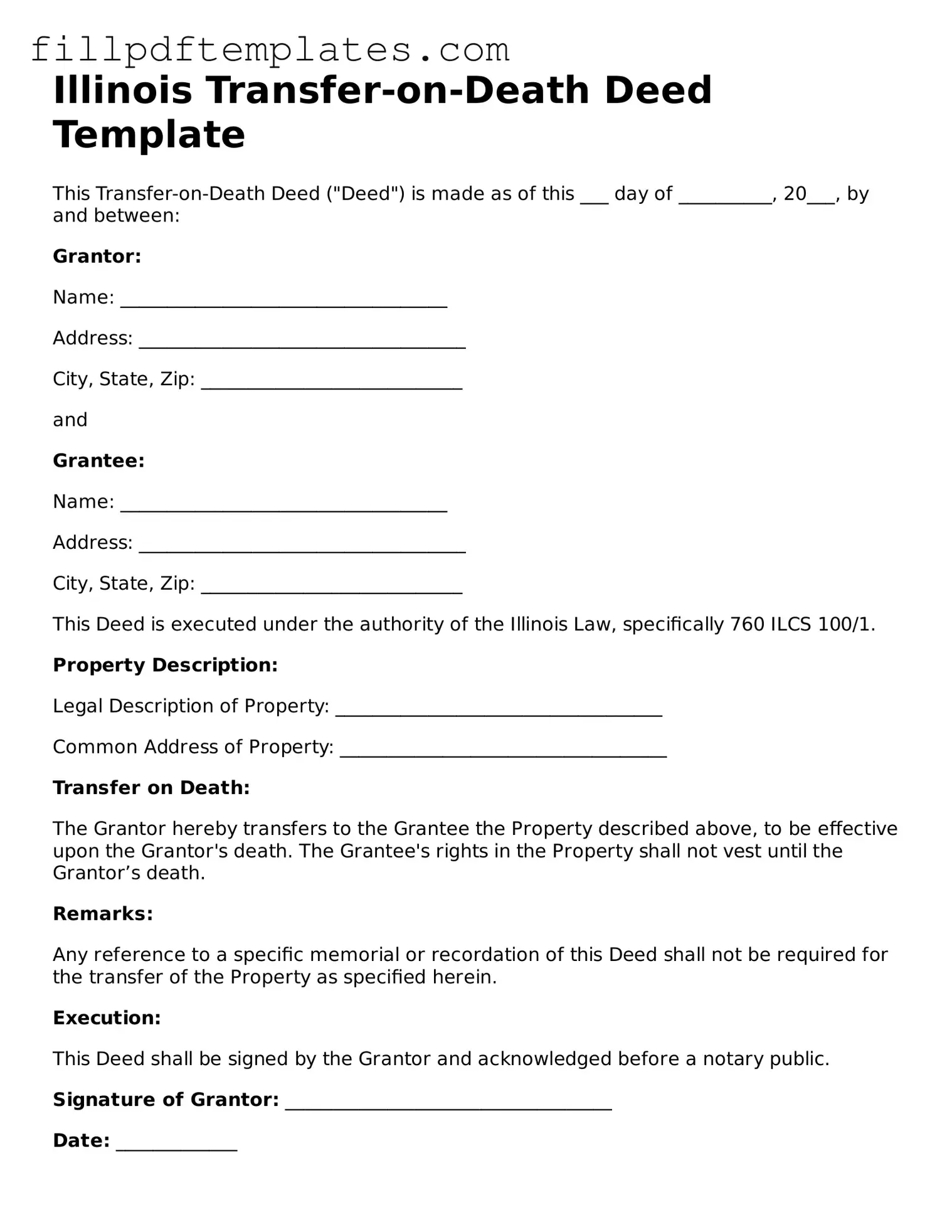Illinois Transfer-on-Death Deed Template
This Transfer-on-Death Deed ("Deed") is made as of this ___ day of __________, 20___, by and between:
Grantor:
Name: ___________________________________
Address: ___________________________________
City, State, Zip: ____________________________
and
Grantee:
Name: ___________________________________
Address: ___________________________________
City, State, Zip: ____________________________
This Deed is executed under the authority of the Illinois Law, specifically 760 ILCS 100/1.
Property Description:
Legal Description of Property: ___________________________________
Common Address of Property: ___________________________________
Transfer on Death:
The Grantor hereby transfers to the Grantee the Property described above, to be effective upon the Grantor's death. The Grantee's rights in the Property shall not vest until the Grantor’s death.
Remarks:
Any reference to a specific memorial or recordation of this Deed shall not be required for the transfer of the Property as specified herein.
Execution:
This Deed shall be signed by the Grantor and acknowledged before a notary public.
Signature of Grantor: ___________________________________
Date: _____________
Notary Public:
State of Illinois
County of _____________________
Subscribed and sworn before me on this ___ day of __________, 20___.
Signature of Notary Public: ___________________________________
My Commission Expires: ____________
